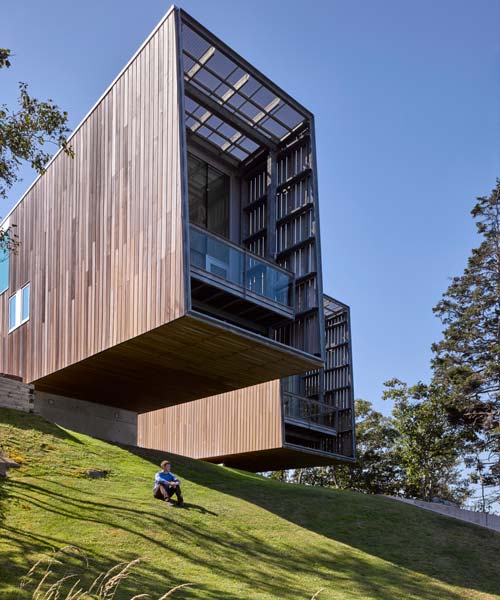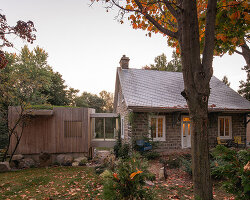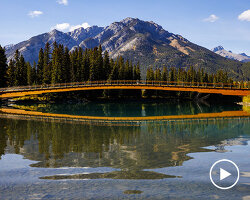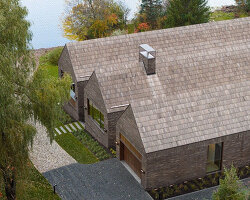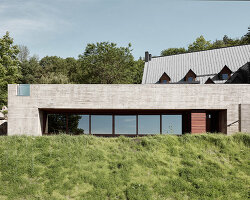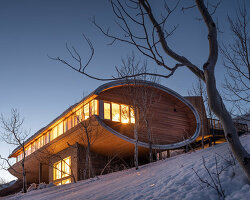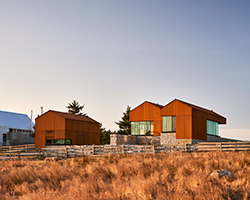this residence, the two hulls house, has been designed by mackay-lyons sweetapple architects in the village of port mouton in nova scotia. the site’s geological makeup includes granite bedrock and boulder till. it’s known for its pristine white-sand beaches and turquoise waters.
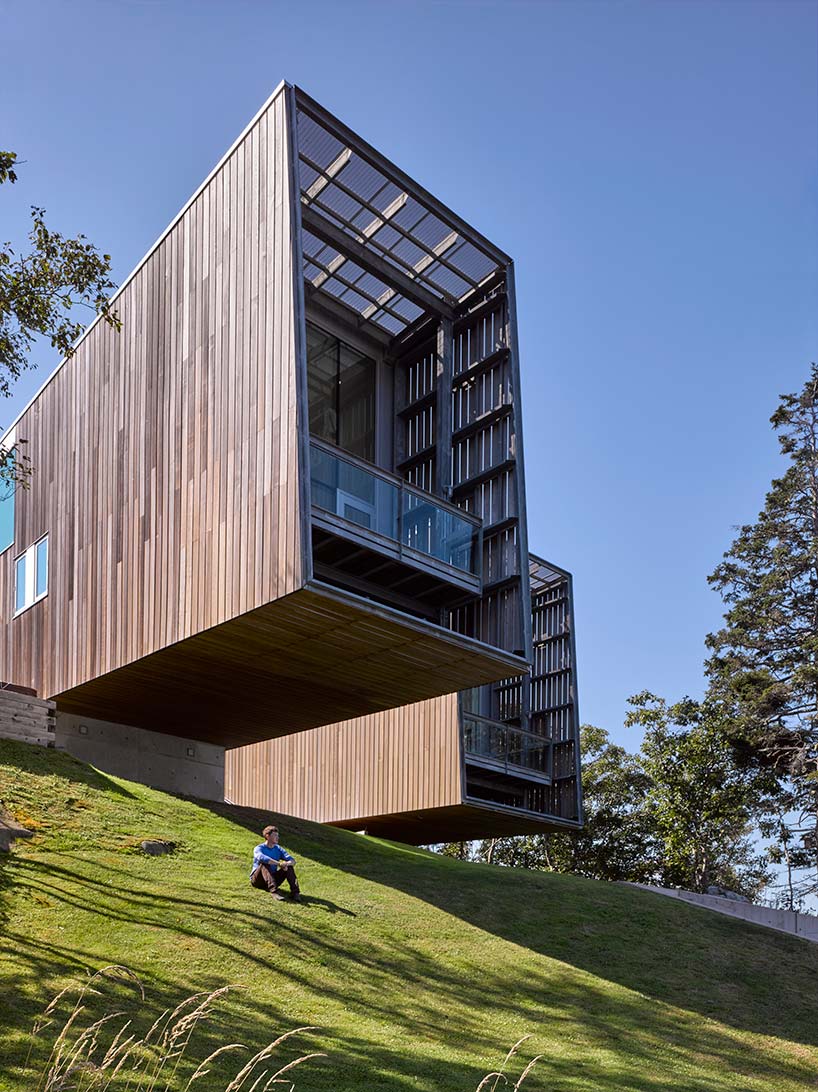
image by james brittain | main image by greg richardson
the project derives its name from its inherent resemblance of the hulls of two great ships washed ashore — a likeness emphasized by its proximity to the sea, and its wooden exterior. nova scotia has a long maritime history, which to this day remains an important part of its culture. this heritage, and local fascination with the sea contributes to the project’s predominant design elements.
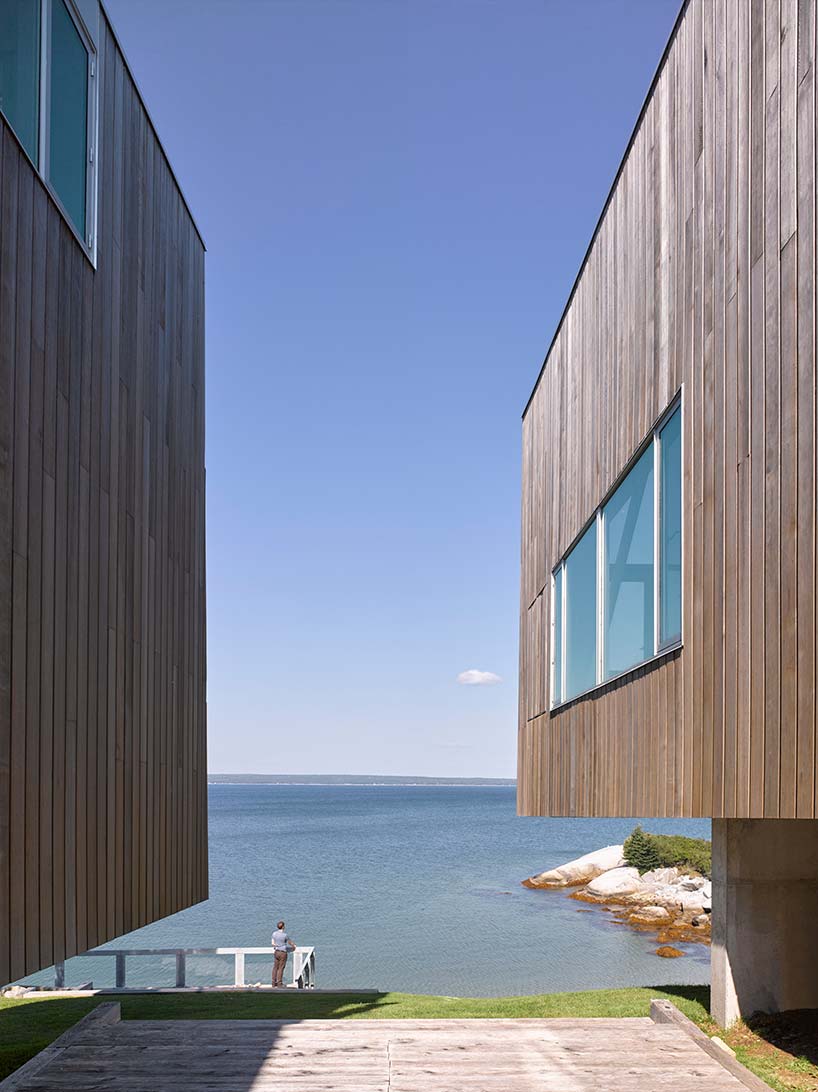
image by james brittain
the two elongated halls share a likeness with a pair of binoculars, with two massive windows perpetually focused on the horizon. these ‘pavilions’ each sit on a narrow base, as to respect the fragile ecosystem and landscape beneath them. the house hovers over the hill with 32 foot cantilevers. as a result of this considerate design feature, the plot acquires new spaces between the cantilevered structures, opening areas for picnics and parties that would normally be unusable due to structural distractions. yet, the architect’s clean design makes every corner of the home quite charming. the house is a full-time residence for a family of four, and comprises a day pavilion and a night pavilion — it’s an interesting division of space.
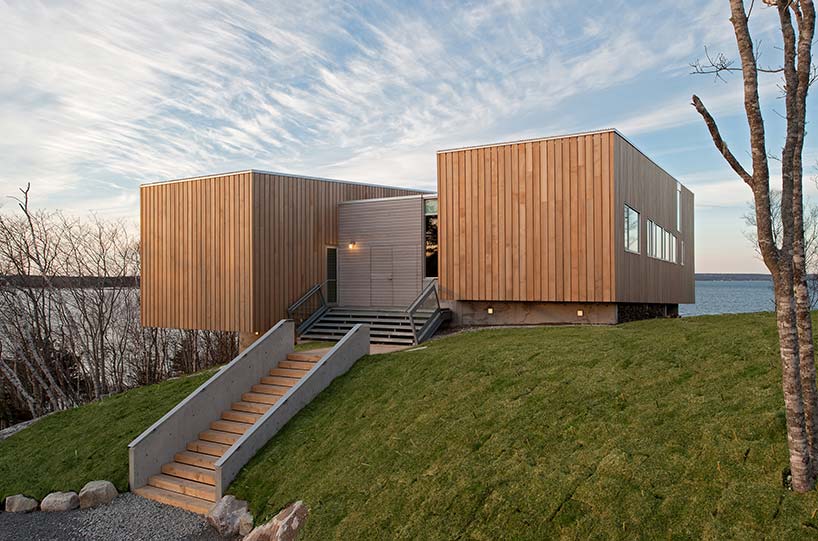
this and title image by greg richardson
mackay-lyons sweetapple architects‘ design has a steel-frame structure kept up by a bridge truss and covered with a board-and-batten cedar skin. the endoskeleton resists both gravity loads and wind uplift, while concrete fin foundations invite the ocean to pass under without damaging the hulls above. the home further attempts to become part of the natural environment by incorporating a geothermal heating system, as concrete thermal-mass floors harvest heat from the sun. the architects emphasize that the building is ‘carefully crafted, and durable‘ and ‘responds to its demanding climate in order to achieve a long life and elegantly reference the maritime heritage of its place.’
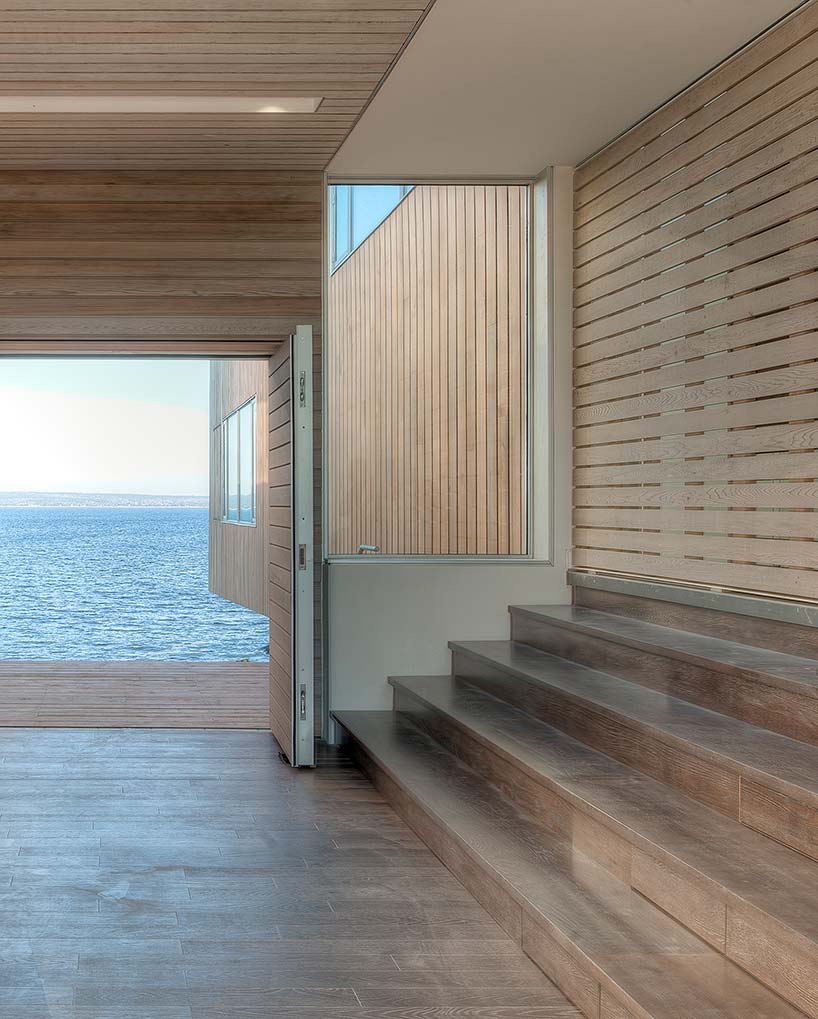
image by greg richardson

image by james brittain
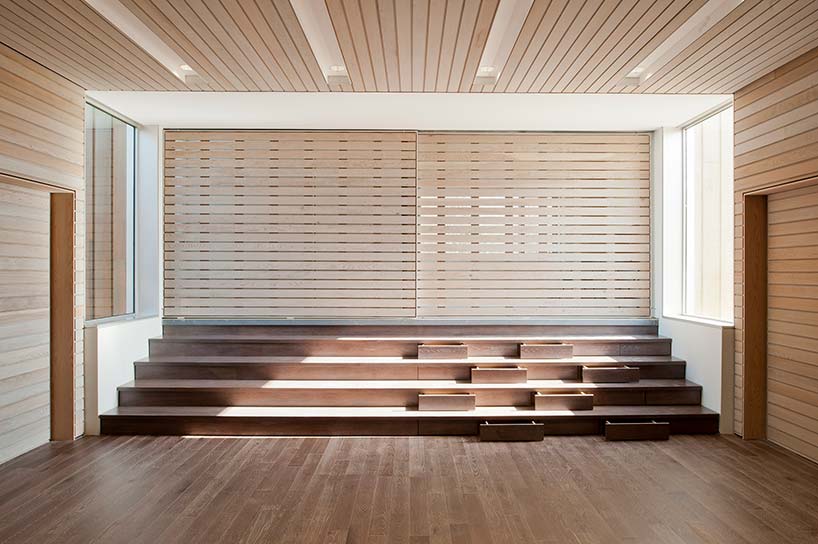
image by greg richardson
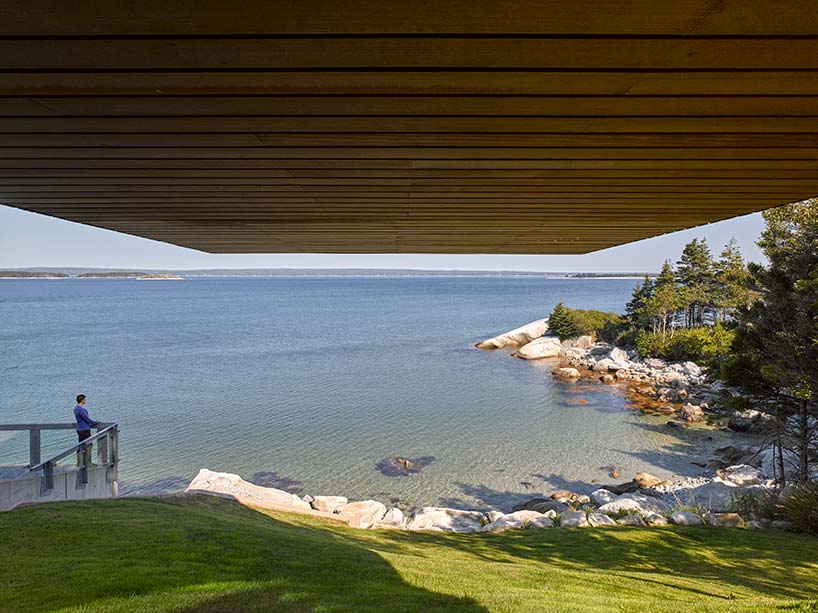
image by james brittain
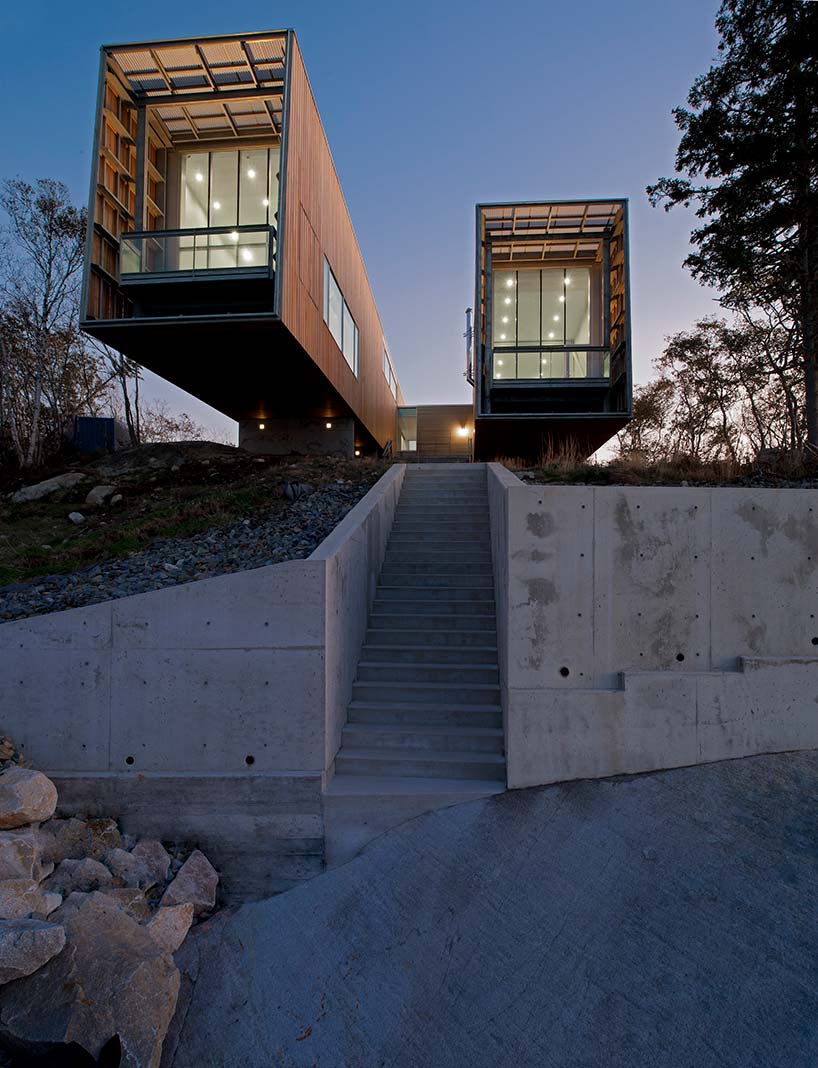
image by greg richardson
